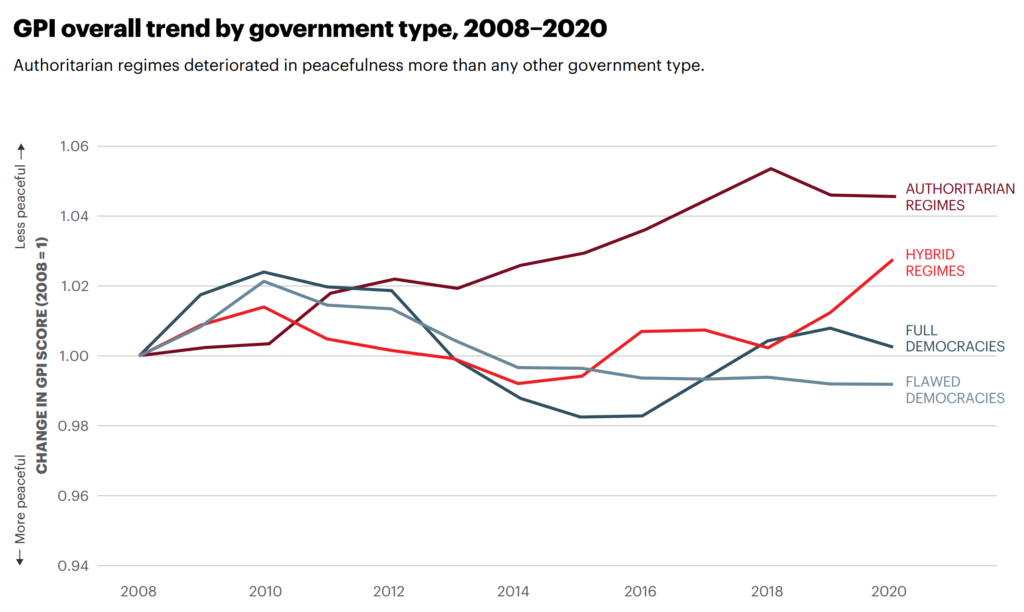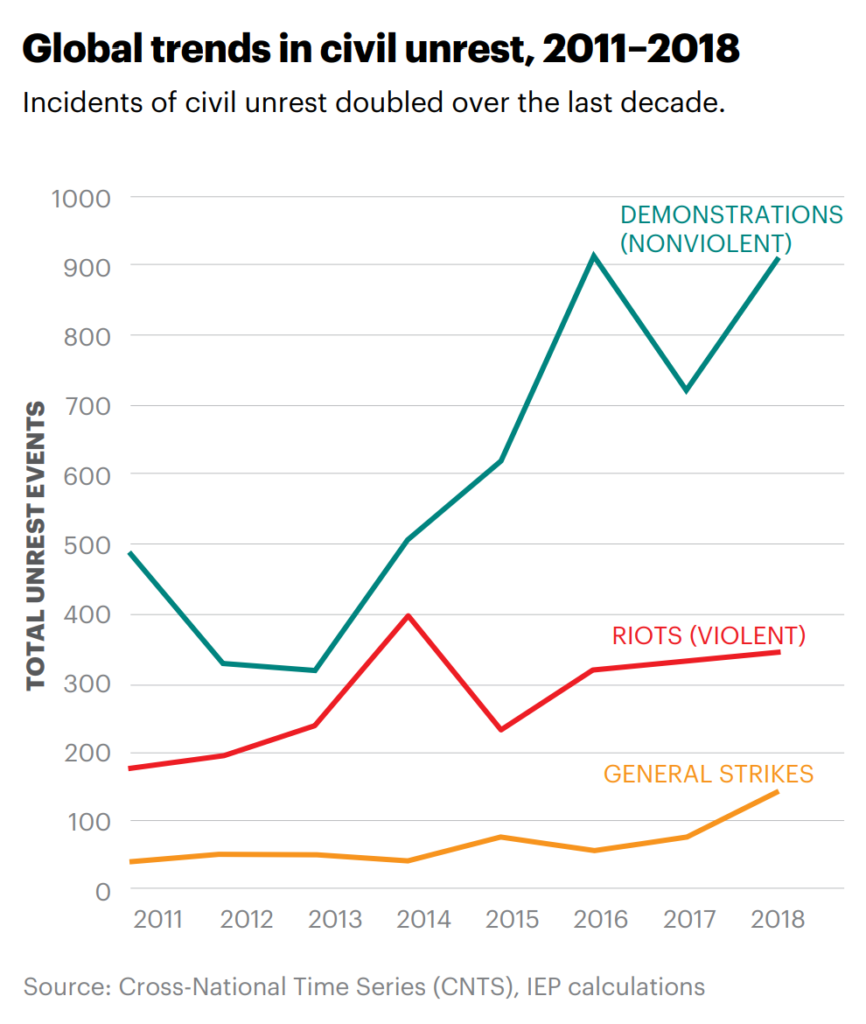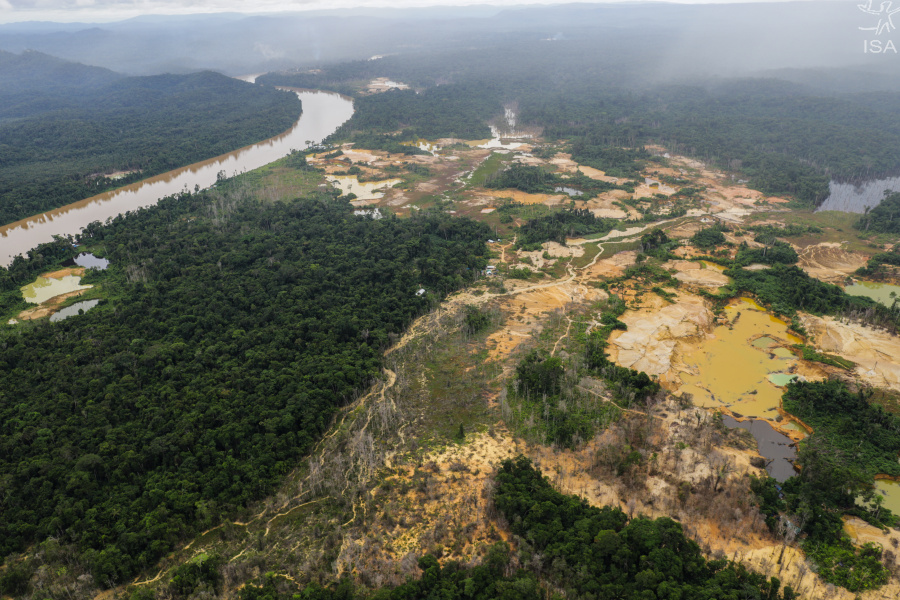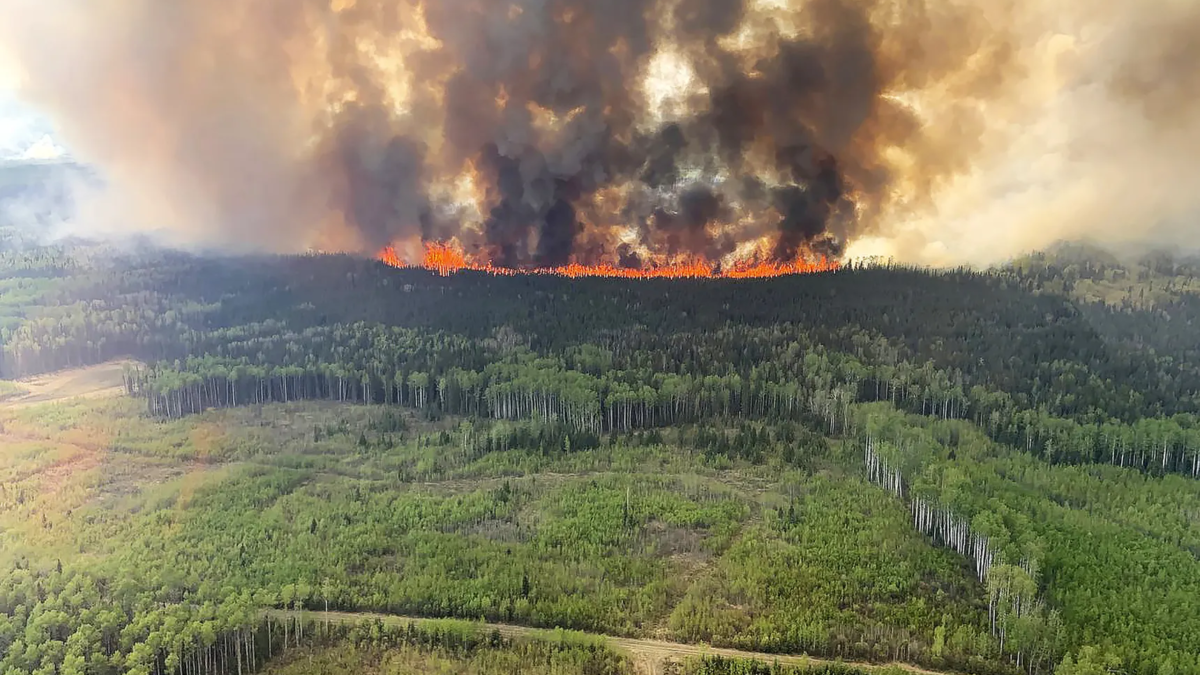Global peacefulness falls for the fourth time in the last five years – “We find ourselves at a critical juncture”

11 June 2020 (Institute for Economics and Peace) – This is the 14th edition of the Global Peace Index (GPI), which ranks 163 independent states and territories according to their level of peacefulness.
In addition to presenting the findings from the 2020 GPI, this year’s report includes an analysis of the effect of the COVID-19 pandemic on peace, including Positive Peace: the attitudes, institutions and structures that create and sustain peaceful societies. It examines how the impact of the pandemic, and in particular its economic consequences will increase the risk of severe deteriorations in Positive Peace over the next few years, and also examines which countries are best placed to recover from the shock.
The results this year show that the level of global peacefulness deteriorated, with the average country score falling by 0.34 per cent. This is the ninth deterioration in peacefulness in the last twelve years, with 81 countries improving, and 80 recording deteriorations over the past year. The 2020 GPI reveals a world in which the conflicts and crises that emerged in the past decade have begun to abate, only to be replaced with a new wave of tension and uncertainty as a result of the COVID-19 pandemic.
Iceland remains the most peaceful country in the world, a position it has held since 2008. It is joined at the top of the index by New Zealand, Austria, Portugal, and Denmark.
Afghanistan is the least peaceful country in the world for the second year in a row, followed by Syria, Iraq, South Sudan and Yemen. All, except Yemen, have been ranked amongst the five least peaceful since at least 2015.
Steve Killelea, Founder and Executive Chairman of the IEP, said about this years Index:
“The fundamental tensions of the past decade around conflict, environmental pressures and socio-economic strife remain. It’s likely that the economic impact of COVID-19 will magnify these tensions by increasing unemployment, widening inequality and worsening labour conditions – creating alienation from the political system and increasing civil unrest. We therefore find ourselves at a critical juncture”.
The 2020 GPI reveals a world in which the tensions, conflicts, and crises that emerged in the past decade remain unresolved, but some progress has been made towards achieving peace. While long-running conflicts have begun to decline or at least plateau, the underlying causes of many of these conflicts have not been addressed, and the potential for violence to flare up remains very real. There have also been new tensions arising, and growing dissatisfaction with governments around the world which has led to an increasing authoritarian response in some countries.

Key Results
- The average level of global peacefulness deteriorated 0.34 per cent on the 2020 GPI. This is the ninth time in the last 12 years that global peacefulness has deteriorated.
- In the past year, 80 countries recorded deteriorations in peacefulness, while 81 recorded improvements.
- The gap between the least and most peaceful countries continues to grow. Since 2008, the 25 least peaceful countries declined on average by 12.9 per cent, while the 25 most peaceful countries improved by 2.1 per cent.
- There has been a sharp rise in the level of civil unrest over the last decade, with over 96 countries experiencing at least one violent demonstration in 2019.
- From 2011 to 2019, the number of riots, general strikes and anti-government demonstrations around the world increased by 244 per cent.
- Europe had the largest number of protests, riots and strikes over the period, totalling nearly 1,600 events from 2011 to 2018. Sixty-five per cent of the civil unrest events in Europe were nonviolent.
- Civil unrest in sub-Saharan Africa rose by more than 800 per cent over the period, from 32 riots and protests in 2011 to 292 in 2018.

Economic Cost of Violence Highlights
- The global economic impact of violence was $14.5 trillion PPP in 2019, equivalent to 10.6 per cent of global GDP or $1,909 per person.
- The global economic impact of violence improved for the second year in a row, decreasing by 0.2 per cent or $29 billion from 2018
to 2019. However, it is $1.25 trillion higher than what is was in 2012. - The biggest improvement in the economic impact was for Armed Conflict, which decreased by 11 per cent or $66 billion in 2019 to $521 billion. This was because of improvements in deaths from terrorism and GDP losses from conflict, which fell by 48 per cent and 21 per cent respectively.
- In the ten countries most economically affected by violence, the average economic cost was equivalent to 41 per cent of GDP. In the ten most peaceful countries the average economic cost was 3.9 per cent of GDP.
Positive Peace and COVID-19 Highlights
- Positive Peace offers a framework for interpreting and describing the COVID-19 crisis.
- Nations that are more likely to recover relatively quickly from the crisis are those which combine low levels of public debt with strong performance in the Well-Functioning Government Pillar.
- The crisis and the social isolation response are expected to send most countries into recession in 2020. The travel and tourism industries are likely to incur severe contractions.
- Countries with strong Positive Peace have higher resilience to absorb, adapt and recover from shocks, such as COVID-19 and the ensuing recession.

Ecological Threat Register Highlights
- The number of natural disasters has tripled in the last four decades.
- By 2050, climate change is estimated to create up to 86 million additional migrants in sub-Saharan Africa, 40 million in South Asia and 17 million in Latin America.
- 873 million people experienced severe food insecurity and hunger in 2017.
- The risk of food insecurity could increase fourfold in the world’s most food insecure nations compared to those at low risk as a result of the COVID-19 pandemic.
- More than two billion people live in countries experiencing high water stress, and about four billion people experience severe water scarcity for at least one month of the year. Water use has increased by one per cent per year for the last four decades.
Global peacefulness falls for the fourth time in the last five years



